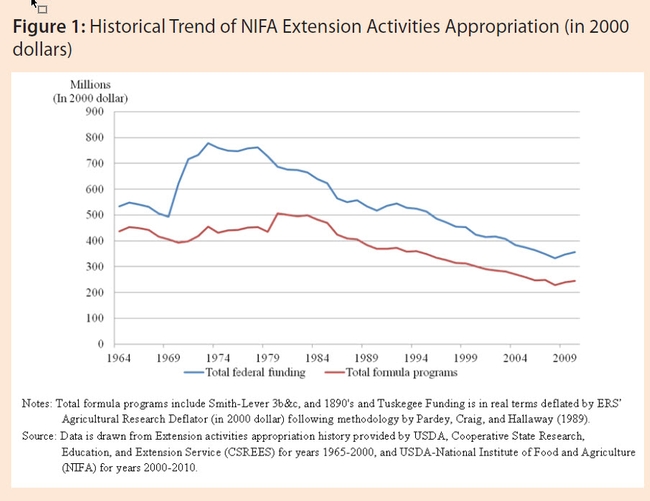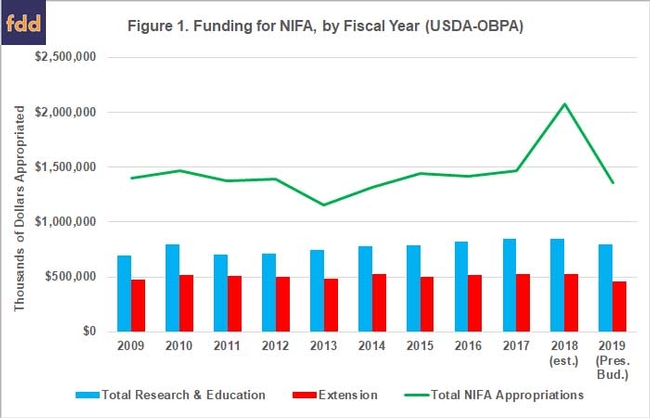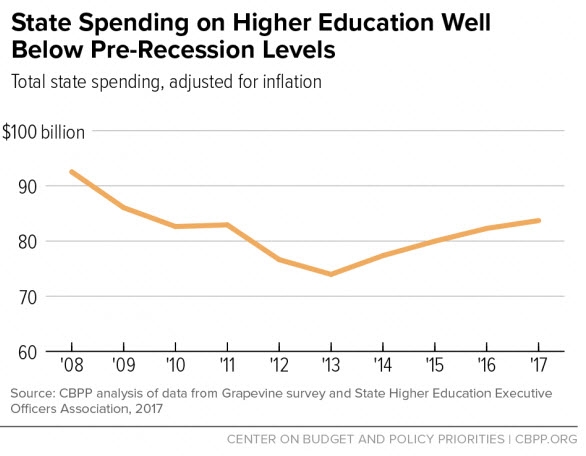A few months ago I was surprised when we saw no increase in our state funding because campuses did see increases. Yes, I knew it was possible because there was no conversation about increasing the OP budget and, after all, we are a line item in the OP budget. Nevertheless, I remained optimistic. It didn't materialize; the state said 'no' to an increase in the OP budget and did not call out UC ANR for any special augmentation. But that wasn't the end of the effort. Next came several months of negotiations with OP to find additional support for UC ANR that reflected what the UCSF Corridor model would have provided had OP not been prohibited from receiving an increase. We just learned that we will see a one-time increase, but not the full model provision. That's progress, and we'll take it!
Key to my responsibilities is thinking forward about what all of this means for UC ANR. What impact does our funding model have on the size of our programs, our funding sources, what we deliver, what capacity we have if we change nothing, and what opportunities exist to attract resources that enhance our position? I work through the 'what if' and then align scenarios with goals and key strategies. There isn't a single path but rather numerous paths that lead to the intended outcome. No crystal ball shows me what's ahead, what external forces will come into play at any given time, and there is error associated with the scenario projections. Thus, the failure to achieve the intended outcome is possible. But the forecast is necessary for managing what the future holds.
Often, I look back to better see forward. Funding history is the first place to start. Historically, federal funding for Cooperative Extension has declined. While that funding has been stable for the last decade, flat funding for Cooperative Extension since 2009 means an annual shortfall equivalent to the increased costs for peoples, supplies, and operations.
State funding in 2017 for higher education across the U.S., remained below the pre-2008 levels. California funding was closer to pre-2008 levels than many/most states. The recent increase to the campuses may put the state funding on par with pre-2008 funding amounts. Nonetheless, it would be unwise to count on state funds to keep up with the pace of increased costs, much less regain the previous position.
In theory, the UCOP portion of the ANR budget is calculated using the “UCSF Corridor” model, and the source of funds continues to be the campus assessment. The corridor model has not yet been provided to UC ANR, in part because the OP budget remained flat in FY18/19 and now again in FY19/20 (no increase through campus assessment). Fortunately, for FY19/20, we will receive approximately 2/3 of what the UCSF Corridor model would have provided.
Once implemented, the UCSF Corridor model means that “in years where the University receives increased funding from the State, ANR would receive its "normal share" of the first 2% increase and then one-half of its normal share above 2%. In years in which the University receives budget reductions from the State, ANR would receive a reduction equivalent to its normal share of the first 1% and then 25% of its normal share above 1%. 'Normal share' is based on the percentage increase being allocated to the campuses for their base budget adjustment.” Glenda points out in a May 2016 post, “The bottom line, I believe, is that we now have a budget model that reduces uncertainty and allows us to plan and forecast into the future more effectively."
In my role, it is imperative that I think forward and calculate what the UCSF Corridor model means to UC ANR resources. While the uncertainty is reduced, it is replaced with predictable shortfall because, like this year, our increase is below that of the campuses yet we have academic and staff costs that keep up with the campus costs. Furthermore, even if we receive the full state increase, as campuses do, we could very well fall short of cost increases in any given year; this is not uncommon.
Clearly, state and federal funds do not offer a path for real growth. Diversifying our funding sources, using many strategies and ways is key to maintenance and growth. I don't share this with a defeatist attitude. If we know what we have ahead of us and prepare by laying the groundwork, we are more resilient to whatever we face. And, if circumstances are better than projected, we have a buffer! I will share a bit more about our diversified funding efforts in an upcoming post. This one is getting long.
The takeaway message is that we do have a lot of things going for us in getting ready for the future. Not the least of which is the caliber of our current programs and a long history of programmatic accomplishments. Rather than waiting to see what comes, we are constantly looking out 5 to 10 years, when making decisions to determine how that decision interacts with anticipated external factors and a projected funding reality. The growing list of tiny victories, in aggregate, make great strides towards ensuring that those who wish to be here 20, 30 years from now have the same or enhanced opportunities.


